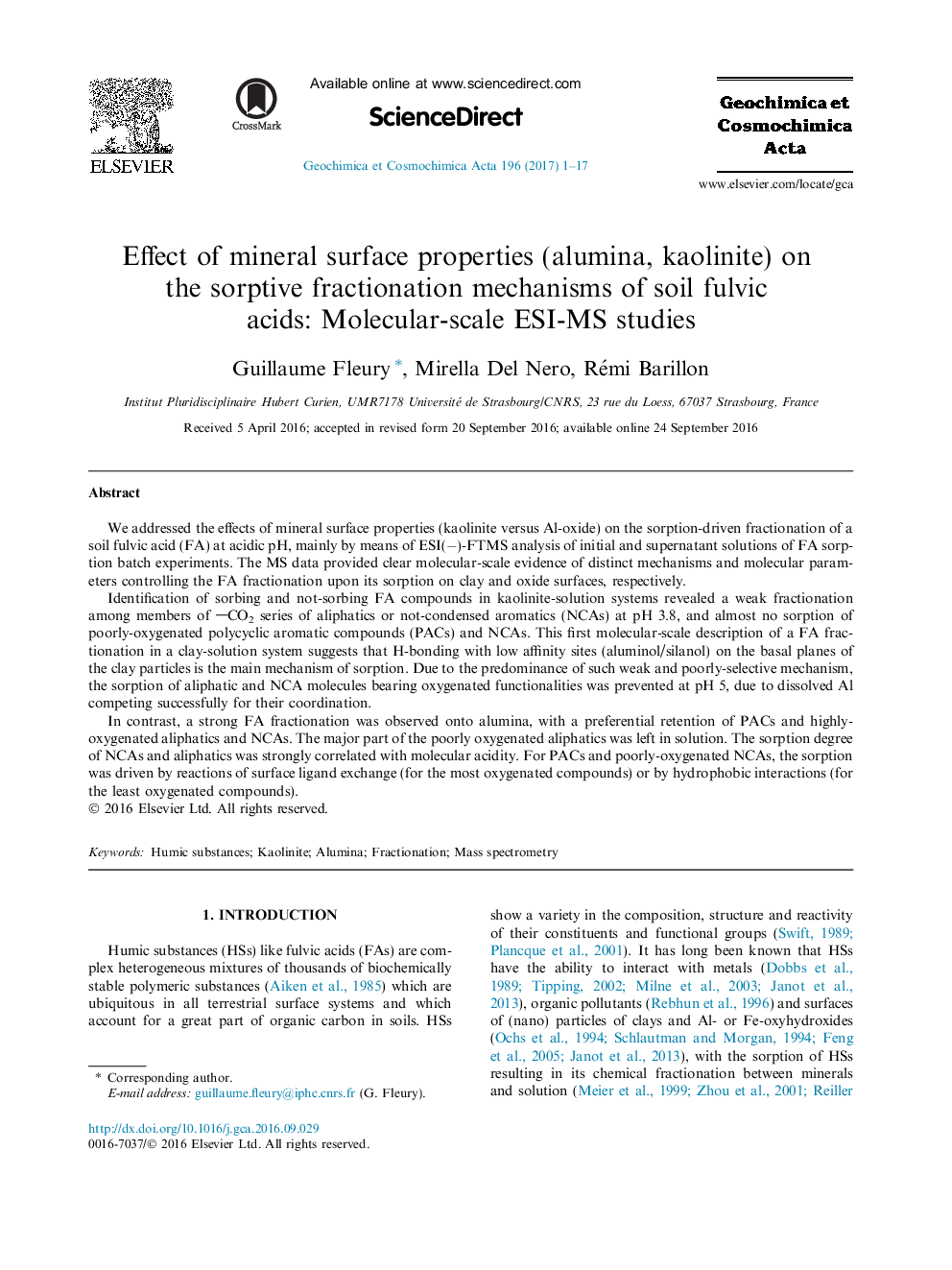| Article ID | Journal | Published Year | Pages | File Type |
|---|---|---|---|---|
| 6437095 | Geochimica et Cosmochimica Acta | 2017 | 17 Pages |
We addressed the effects of mineral surface properties (kaolinite versus Al-oxide) on the sorption-driven fractionation of a soil fulvic acid (FA) at acidic pH, mainly by means of ESI(â)-FTMS analysis of initial and supernatant solutions of FA sorption batch experiments. The MS data provided clear molecular-scale evidence of distinct mechanisms and molecular parameters controlling the FA fractionation upon its sorption on clay and oxide surfaces, respectively.Identification of sorbing and not-sorbing FA compounds in kaolinite-solution systems revealed a weak fractionation among members of CO2 series of aliphatics or not-condensed aromatics (NCAs) at pH 3.8, and almost no sorption of poorly-oxygenated polycyclic aromatic compounds (PACs) and NCAs. This first molecular-scale description of a FA fractionation in a clay-solution system suggests that H-bonding with low affinity sites (aluminol/silanol) on the basal planes of the clay particles is the main mechanism of sorption. Due to the predominance of such weak and poorly-selective mechanism, the sorption of aliphatic and NCA molecules bearing oxygenated functionalities was prevented at pH 5, due to dissolved Al competing successfully for their coordination.In contrast, a strong FA fractionation was observed onto alumina, with a preferential retention of PACs and highly-oxygenated aliphatics and NCAs. The major part of the poorly oxygenated aliphatics was left in solution. The sorption degree of NCAs and aliphatics was strongly correlated with molecular acidity. For PACs and poorly-oxygenated NCAs, the sorption was driven by reactions of surface ligand exchange (for the most oxygenated compounds) or by hydrophobic interactions (for the least oxygenated compounds).
